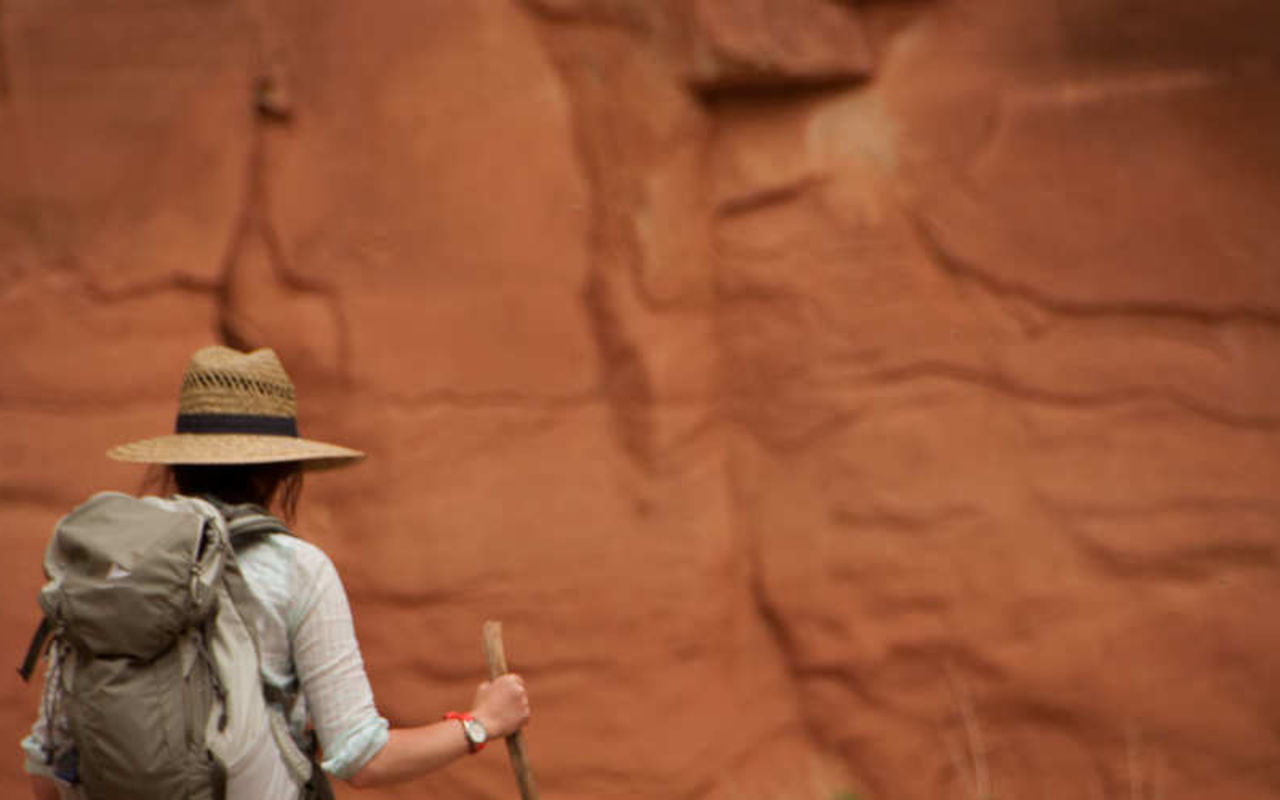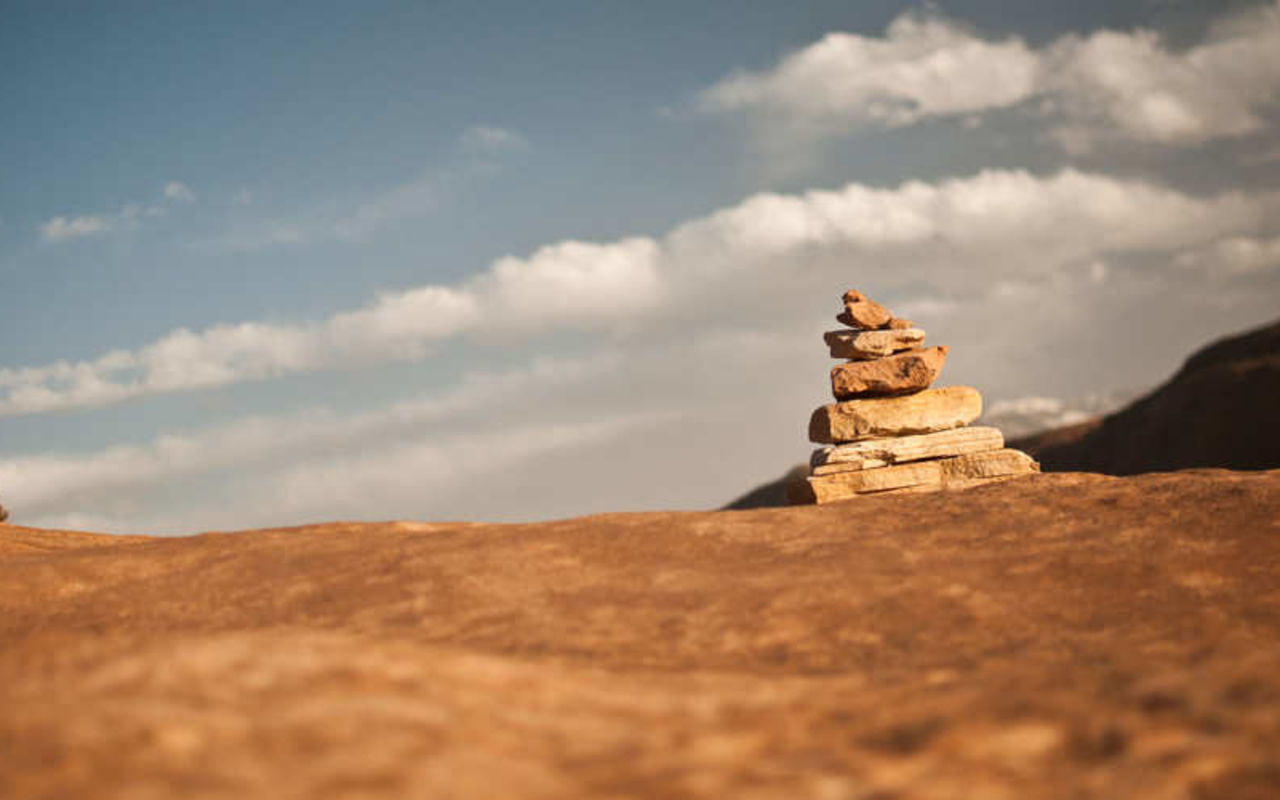Southern Utah Red Rock Country
Some of the world's best hiking trails are located in the red rock country of southern Utah.
Spring and fall are ideal for hiking the BLM's (Bureau of Land Management) San Rafael Swell, one of America's least trodden wild areas. Trails north and west of Goblin Valley State Park may lead through stream narrows barely wide enough to squeeze through with a backpack. Magnificent cliffs rise hundreds of feet above. For wet and wild hikes along the San Rafael River, try routes west of the San Rafael Campground about 20 miles southwest of Castle Dale. The Book Cliffs east of the Green River also offer excellent hiking.
Sego Lily is a pleasant walk in Capitol Reef National Park is the 2-mile round trip hike to Hickman Bridge, the largest span in the park. Capitol Reef offers dozens of other hikes exploring the amazing waterpocket fold, a 100-mile eroded uplift.
The Narrows hike is the most popular outing in Zion National Park and it is accessible to almost everyone. The first mile is paved and easy. Beyond the pavement you hike right in the river and so going is tougher but very enjoyable. You just hike up the river until you get tired or run out of time. Serious backpackers go in at the top and tackle the entire 16-mile-long gorge. The gorge is about 2,000-foot deep in some areas, and little more than 20 feet wide. There are many other excellent trails in Zion Park, including Angels Landing in Zion Canyon and the 14-mile round-trip hike to enormous Kolob Arch in the Kolob Canyons section.
In Bryce Canyon National Park, the 22-mile Under-The-Rim Trail is popular, as are the shorter segments that showcase Bryce from the rim of the canyon. The soft rock crumbles easily, so watch for varying trail conditions.
At Pine Valley Recreation Area near Pine Valley, a 15-mile loop hike enters the heart of the Pine Valley Mountains.
In BLM's Paria Canyon Wilderness Area, 38 miles east of Kanab south of Hwy 89, hikers follow the Paria River or its tributaries through narrow passageways and Navajo sandstone formations. (Hikers must register with the BLM in Kanab.)
Southeast of Escalante, in BLM's Escalante River Canyons hikers will encounter what may be the ultimate canyon country backpacking experience. (A free backcountry use permit should be obtained from the inter-agency office west of the town of Escalante).
Arches and Canyonlands National Parks each provide many easy walks and day hikes. The Needles District of Canyonlands National Park (fee area) is a backpacking favorite that offers a variety of exploration opportunities.
Hammond Canyon Semi-primitive Area, accessible from both Monticello and Blanding and administered by the Forest Service, is explored in both day hikes and overnighters. In the BLM's Grand Gulch Primitive Area (fee area) 45 miles southwest of Blanding on Hwy 261, hikers may spend a day, or sometimes weeks exploring the remnants of the Ancestral Pueblo Indian culture.
The Dark Canyon Primitive Area/Wilderness Area on BLM land, between the Abajo Mountains and the Colorado River, leads experienced hikers into the least explored narrow canyons of Utah. It is generally reached via dirt roads off Hwy 95 near Hite Crossing or by boat from Lake Powell. From July to October, the area is also accessible from the Abajo Mountains west of Monticello and Blanding. Vehicles of any kind (including bicycles) are not allowed in these primitive areas.
Southern Utah Red Rock Country | Photo Gallery


Southern Utah Red Rock Country